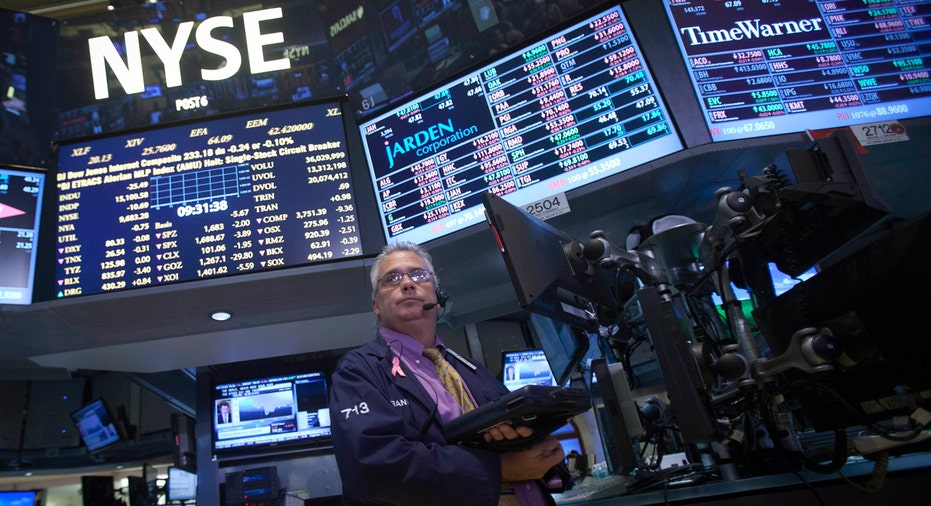Selling Accelerates into the Close as Energy Drops

U.S. equity markets saw a sea of red on Thursday as renewed concerns in commodities, especially the energy sector, pressured stocks.
The Dow Jones Industrial Average dropped 252 points, or 1.42% to 17496. The S&P 500 gave up 31 points, or 0.50% to 2041, while the Nasdaq Composite declined 68 points, or 1.35% to 5002.
Utilities was the only sector in the green, while energy declined 2.5%.
Today’s Markets
After a more than 1% post Fed rate-hike rally on Wednesday, Wall Street gave back gains on Thursday as renewed pressure from the energy sector forced U.S. equity markets substantially lower.
“With the U.S. dollar strengthening, the subsequent sell off in commodities was inevitable as further pressure has been brought to bear on energy prices along with both base and precious metals,” Alastair McCaig, IG market analyst wrote in note.
Renewed jitters over the global oil glut once again weighed on the oil market. In recent action, U.S. crude prices slid 1.60% to $34.95 a barrel, while Brent, the international benchmark declined 0.88% to $37.06 a barrel.
Elsewhere in the commodities space, metals were solidly lower as gold declined 2.52% to $1,050 a troy ounce. Silver shed 3.76% to $13.68 an ounce, and copper declined 1.29% to $2.04 a pound.
The moves in the market come just a day after a widely anticipated and long awaited decision by the Federal Reserve to raise short-term interest rates from a zero-bound range to 0.25% – 0.50%. The rate hike was the first in more than nine years.
Economists at Goldman Sachs, in a note, said the Fed’s policy changes held very few surprises for Wall Street, and that’s partially why a blockbuster rally is unexpected in the days following the announcement.
“The market reaction was limited, suggesting the policy and statement together were reasonably close to investor expectations. Post-meeting rates in the overnight indexed swap market suggest investors expect the effective funds rate to settle at around 0.34% after liftoff, up from 0.15% in recent days,” the note said.
As Bryce Doty, senior portfolio manager at Sit Investment Associates, put it: The markets took the form of Star Wars star Yoda, telling the central bank, “Do or do not, there is no try.”
“Markets were relieved to see [the rate hike] because it removed uncertainty,” he explained. “But the move that was ‘priced in’ was only until the moment of the event. Now, once it’s passed, the market has to build it what happens from that point forward. There isn’t a 100% consensus about what will happen next.”
Though the first hike has come and gone, economic data will continue to play an important role in the Fed’s decision-making process moving forward as it expects to make three to four more increases before the end of next year.
“I’m surprised that the markets are doing so well considering the Fed expects at least four more hikes in 2016,” Doty said. “I wonder if people just don’t believe that. The one-year yield is at 68 basis points, and I’m thinking that doesn’t bode well for rate hikes on top of what we just had.”
The central bank has repeatedly stated its reliance on data points illustrating the health of the U.S. economy as it evaluates potential changes to monetary policy.
On Thursday, the Philadelphia Federal Reserve’s gauge of manufacturing activity for the mid-Atlantic region dropped solidly back into contraction territory as it tumbled to -5.9 from 1.9 the month prior. Expectations were for a much shallower decline to 1.5.
Meanwhile, the number of Americans filing for first-time unemployment benefits fell more than expected last week to 271,000 from an unrevised 282,000 the week prior. Expectations were for 275,000.
“In light of the firming of job growth since the October meeting, the [policy] statement significantly upgraded its assessment of labor market developments. It now notes ‘ongoing job gains’ and ‘declining unemployment,’ and says that underutilization of labor resources has diminished ‘appreciably,’” Goldman’s note continued.
The statement, however, struck a different tone when it came to inflation pressures as measures closely monitored by the central bank have yet to reach the set 2% target, and that the committee “continues to monitor inflation developments closely.” Goldman’s economists said that’s a clear signal central bankers need to see more inflation in order to continue on the path to lifting rates in 2016 and beyond.



















